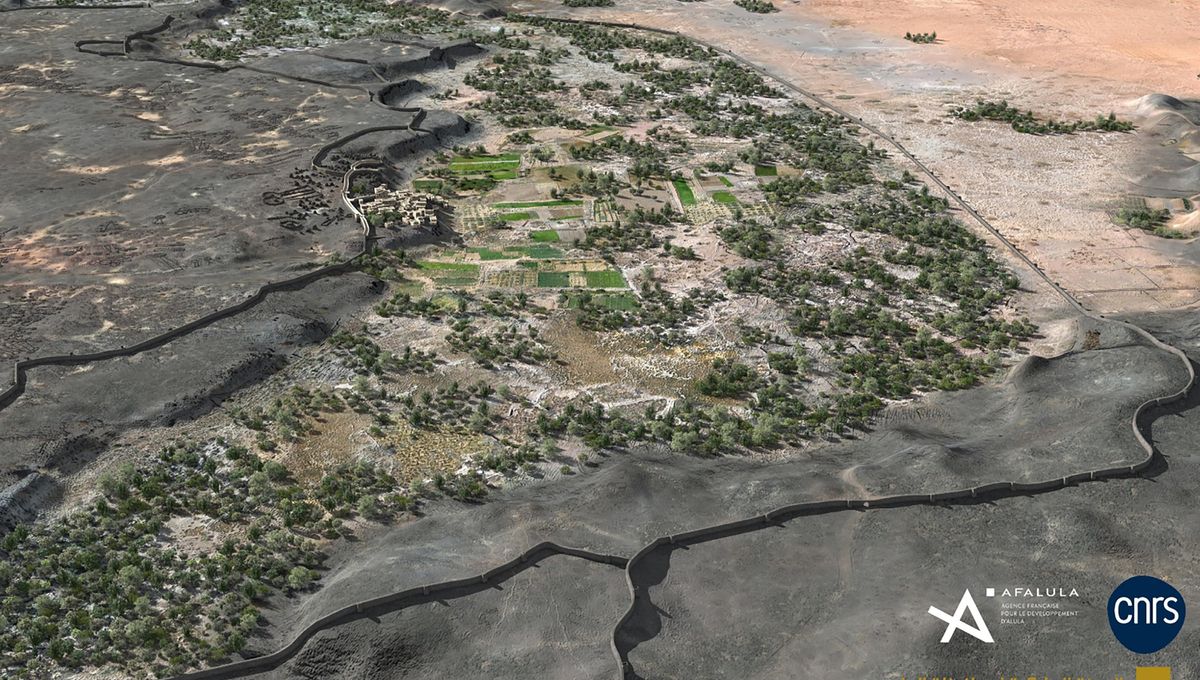
A huge, Bronze Age fortification enclosing the Khaybar Oasis in the North Arabian Desert has been discovered by archaeologists. The walls would have once stretched over 14.5 kilometers (9 miles), making this one of the two largest walled oases ever unearthed in Saudi Arabia.
What remains of the vast rampart has been dated to between 2250 and 1950 BCE, during which time oases were common in the region and were inhabited by sedentary populations.
Despite being one of the longest-known fortifications from this period, no such walls had ever been identified at Khaybar, aside from a famous Islamic-period fortress in the center of its great wadis (river valley). The researchers believe this walled oasis has gone undetected for so long due to the extreme reworking of the desert landscape over the last four millennia.
Having finally discovered it, a feat they say “constitute[d] a significant scientific challenge”, the team was able to estimate the fortifications’ original dimensions: approximately 14.5 kilometers long, 1.7 to 2.4 meters (5.6 to 7.9 feet) thick, and 5 meters (16 feet) high. However, a little less than half of their length survives today.
In their heyday, the mammoth walls would have enclosed a territory of almost 1,100 hectares (2,700 acres). Only the fortified city of Tayma, which had walls around 19 kilometers (12 miles) in length, can rival Khaybar in terms of size – the two sites are the largest walled oases in the region.
In identifying Khaybar as an immense walled oasis that belonged to a network of other such fortified settlements in north-western Arabia, the team has shed some light on human occupation in the area and furthered our understanding of the social complexity of the pre-Islamic period.
“Dating from the Late third millennium BCE, the ramparts of Khaybar were probably built by Indigenous populations as they settled down and ostentatiously demarcated their oasis territory,” the researchers write in their new study. “These ramparts lasted for several centuries before being dismantled or replaced by more recent structures.”
“In addition to the discovery of a unique and securely dated monument, the recognition of the Khaybar walled oasis constitutes a crucial landmark in the architectural and social heritage of north Arabia,” they conclude.
At 4,000 years old, the walled oasis of Khaybar is undeniably a senior citizen of fortified settlements – but for the world’s oldest fortress (an astonishing 8,000 years old), you have to travel east to Siberia.
The study is published in the Journal of Archaeological Science: Reports.
Source Link: Massive 4,000-Year-Old "Walled Oasis" Discovered In Saudi Arabia